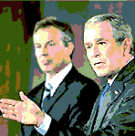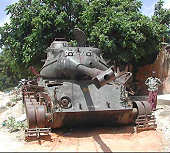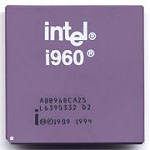 Officer Ozzie Ossifer is patrolling in Vermont near the Canadian border when he witnesses a juvenile engage in an act of malicious criminal cow-tipping. He takes off after the delinquent who crosses the Canadian border. He follows the youth into Canada, his service revolver still firmly stored in his holster. Donuts and desk work have taken their toll on Officer Ossifer and the youth eludes him.
Officer Ozzie Ossifer is patrolling in Vermont near the Canadian border when he witnesses a juvenile engage in an act of malicious criminal cow-tipping. He takes off after the delinquent who crosses the Canadian border. He follows the youth into Canada, his service revolver still firmly stored in his holster. Donuts and desk work have taken their toll on Officer Ossifer and the youth eludes him.
A bad day for the faithful law enforcement official becomes worse when he’s stopped by ICE as he attempts to cross back into the United States. He’s cuffed and taken away for having violated the Arms Export Control Act when he carried his service revolver into Canada without a license from the Directorate of Defense Trade Controls. The cow-tipper having escaped scot-free returns night after night to Vermont to terrorize the local bovine population while Officer Ossifer is on forced administrative leave.
“Nonsense,” you say. Surely the ITAR must have an exemption for this. Well, the ITAR does have an exemption for temporary exports of firearms in section 123.17, but that exemption would be of no avail to the officer in this case. Officer Ossifer made no declaration of the weapon and there was no customs inspection. Things look grim for our fictional Officer Ossifer.
However, the U.S. and Canada are working on an agreement that may protect future (and real) law enforcement officers that cross the Canadian border with their weapons. An article on the CTV website today revealed that Canada is considering a change in its Export and Import Permits Act to permit exempt imports and exports by law enforcement officers when they cross the U.S.-Canada border in the course of their official duties. Significantly this is said to be part of a reciprocal arrangement with the United States, although the United States has yet to announce that it is considering such a reciprocal arrangement.
The chief motivation appears not to be hot pursuit cases such as the one described above, but the U.S. Air Marshall program and its Canadian equivalent, the Canadian Air Carrier Protective Program. Section 123.17 of the ITAR doesn’t apply to U.S. air marshals, who instead can only export firearms without a license under section 123.18 and then only “if they are assigned abroad for extended duty.” It is, of course, safe to assume that the TSA and its air marshals have simply been ignoring the ITAR. If the CTV report is right, we can expect to see soon a revision of the ITAR to cover temporary exports of service weapons by law enforcement officers in the course of their official duties.
The Canadian Gazette notice of the proposed change in Canadian law can be found here.

 Posted by
Posted by  Category:
Category: 

 Although the text of the Defense Trade Cooperation Treaty signed last week by Bush and Blair has not yet been released to the public, the
Although the text of the Defense Trade Cooperation Treaty signed last week by Bush and Blair has not yet been released to the public, the  President Bush and Prime Minister Blair today signed the “Defense Trade Cooperation Treaty” which will ease export license requirements for defense articles exported between the United States and the United Kingdom. Details of the treaty are scarce at this point as the text of the treaty has not yet been released. The treaty will also require Senate approval, so even if the text were available, nothing is certain yet.
President Bush and Prime Minister Blair today signed the “Defense Trade Cooperation Treaty” which will ease export license requirements for defense articles exported between the United States and the United Kingdom. Details of the treaty are scarce at this point as the text of the treaty has not yet been released. The treaty will also require Senate approval, so even if the text were available, nothing is certain yet. The Directorate of Defense Trade Controls (“DDTC”)
The Directorate of Defense Trade Controls (“DDTC”)  Jeffrey Lewis, who works at a DC think tank and who blogs at Arms Control Wonk,
Jeffrey Lewis, who works at a DC think tank and who blogs at Arms Control Wonk, 

